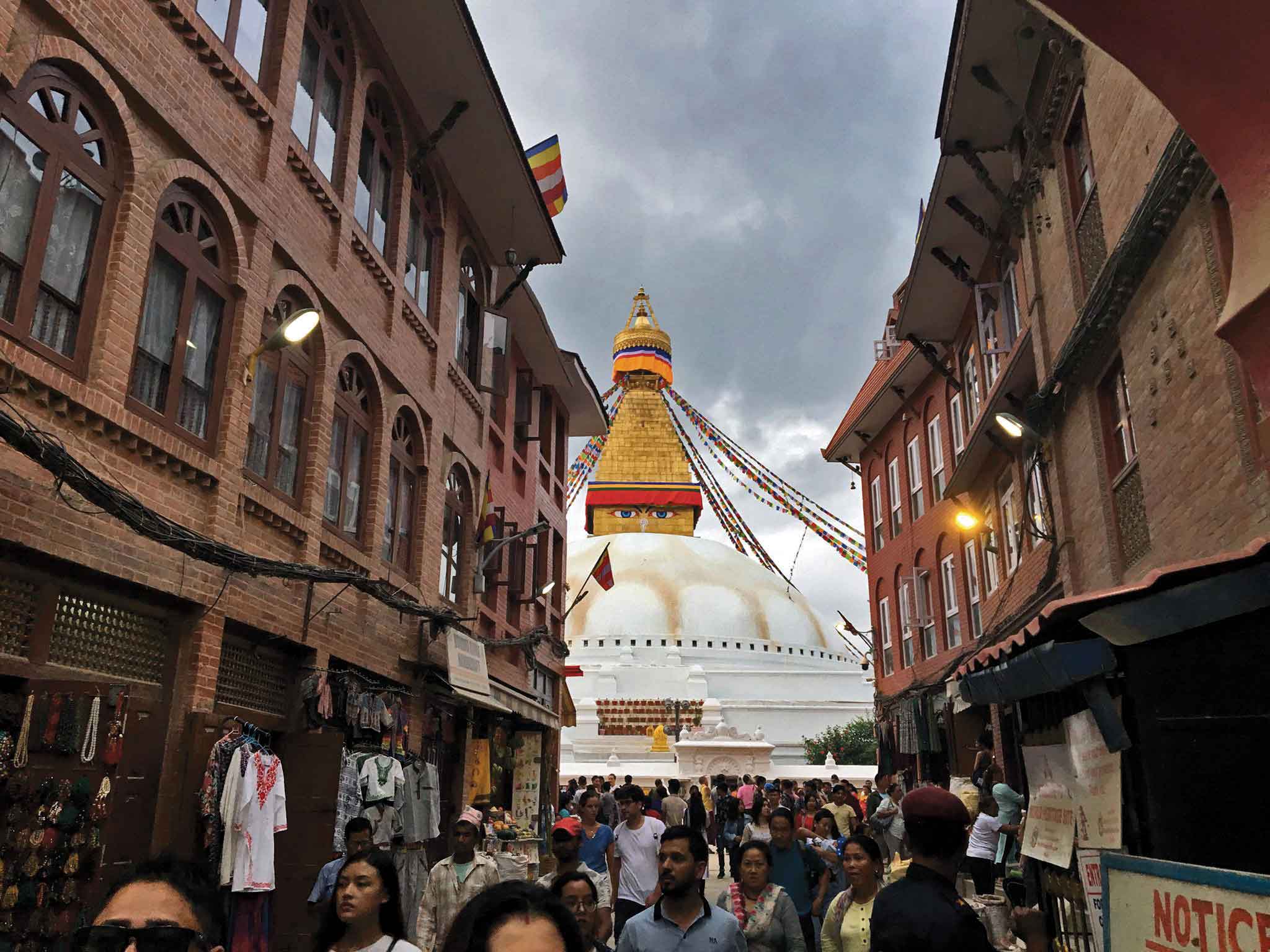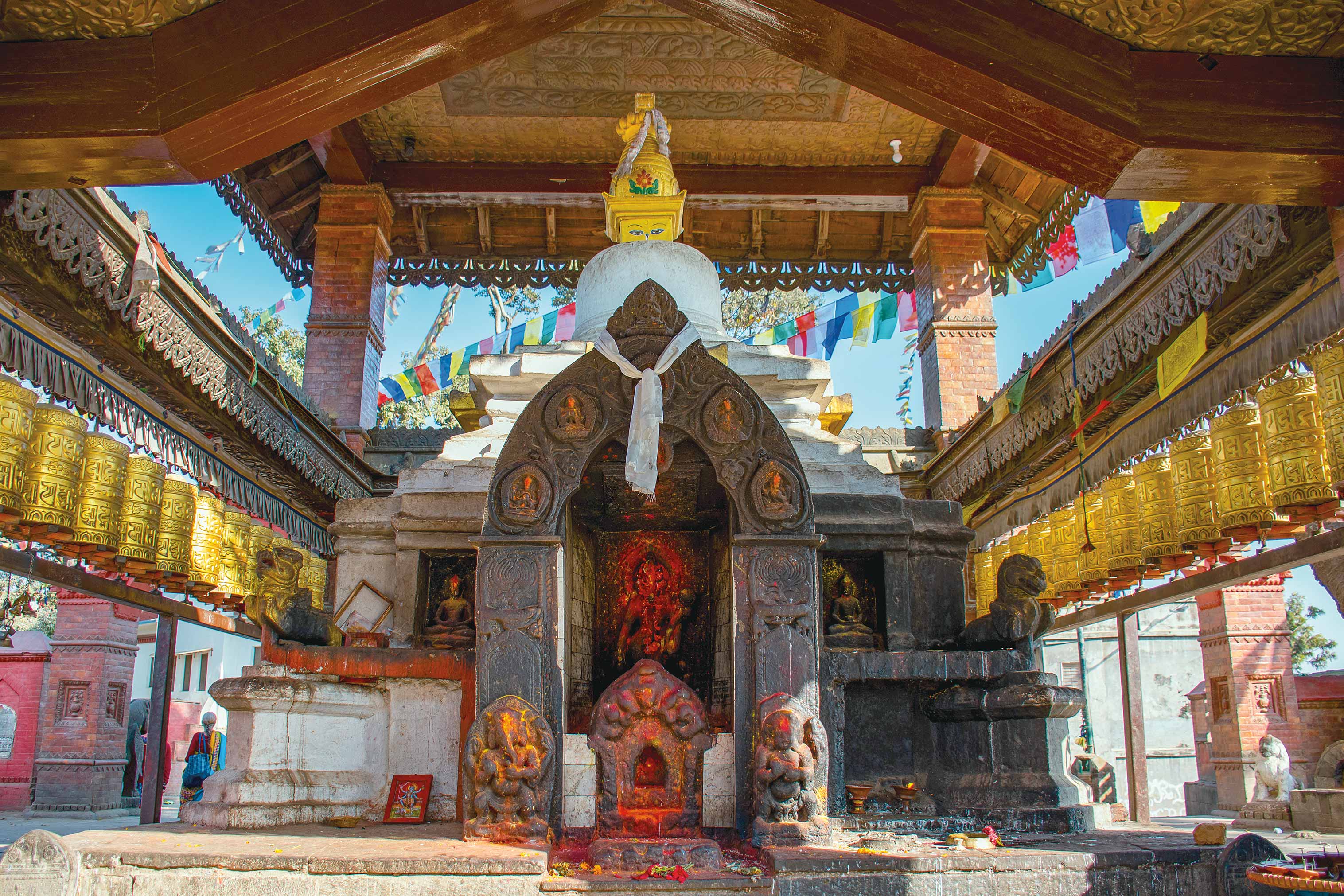Bhaktapur still holds a lot of secrets. One of the better kept ones is the story of Indira Lacchimasyu, the first female to play the dhime bajaa.
Rarely do we come across people who are born to do what they do. These rare individuals have the ability to sweep us off our feet when they talk about their fields of expertise. I was lucky enough to come across one such figure. Indira Lacchimasyu knew she was fated to play the Dhime, a big traditional Newari drum. At a time when girls were not even allowed to touch the instrument, not only did she learn to play the dhime, she ended up conquering it.
 The story of how Lacchimasyu learnt the instrument is one of being at the right place at the right time. Her teacher, a German national, used to visit her locality to teach the neighborhood boys the dhime bajaa. As it turned out, her room just happened to be attached to the practice space. When others rehearsed, she listened and tapped her hands to the beat. One day, when no one was around, she went to the practice room and started banging on the drum. The teacher, who was coming up the stairs, was surprised to hear someone playing so well. He rushed up only to find the little twelve year old Lacchimasyu busy with the instrument.
The story of how Lacchimasyu learnt the instrument is one of being at the right place at the right time. Her teacher, a German national, used to visit her locality to teach the neighborhood boys the dhime bajaa. As it turned out, her room just happened to be attached to the practice space. When others rehearsed, she listened and tapped her hands to the beat. One day, when no one was around, she went to the practice room and started banging on the drum. The teacher, who was coming up the stairs, was surprised to hear someone playing so well. He rushed up only to find the little twelve year old Lacchimasyu busy with the instrument.
After that, there was no turning back. Lacchimasyu joined the boys and started performing with them at different events. “I was like an object of fascination, a little girl who played the dhime,” she says. “Some were against it and others thought it was about time that girls started playing as well. But the most important thing was that I had the support of my family and my teacher.” Her grandfather, a musician himself, taught her the art of nau baaja which she easily picked up. But that was not enough. If she could play the dhime so could other females, she thought. She then gathered ten local girls and started tutoring them. At fifteen, Lacchimasyu and her students became the first group of girls to play the instrument. That was when they formed the Dattatreya Cultural Group. A decade and a half later, they have changed their moniker to the dhime girls. “We just needed a stage name and dhime girls couldn’t have been more perfect,” she explains.
The journey of the dhime girls hasn’t been a smooth one. Many of the original members got married, some couldn’t dedicate their time and a few weren’t supported by their families. Out of the initial ten members, there are only four today - Kriza Manandhar, Julung Shrestha, Leena Manandhar and Lacchimasyu herself.
Lacchimasyu still plays regularly. She usually meets up with her girls for a short practice session and then they head off to perform. Being a mother, a housewife and a teacher, Lacchimasyu has her hands full but she always finds time for the dhime. She picked up the instrument for the camera but once it was in her hands, the courtyard was filled with her rhythm. In the fading light of day, it felt like the place had come alive. As I stood there watching in awe, I sensed her passion, the very same passion she must have had the first time she picked up the instrument. The time Lacchimasyu became the first dhime girl.










